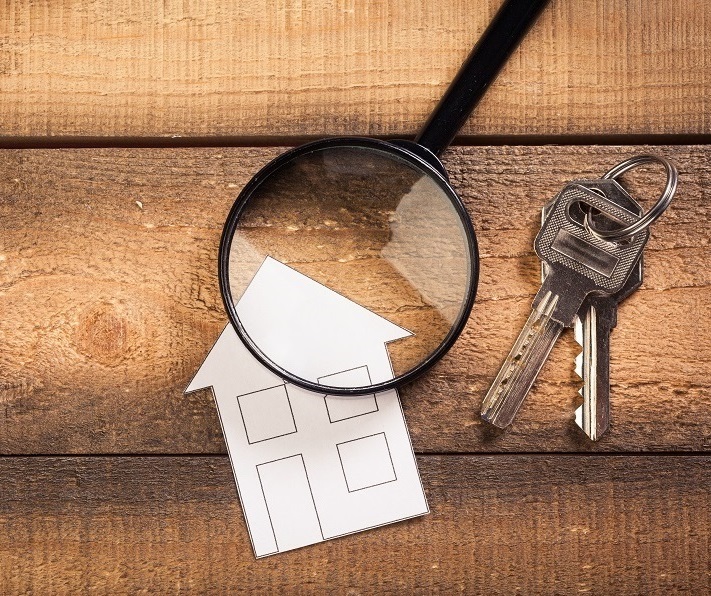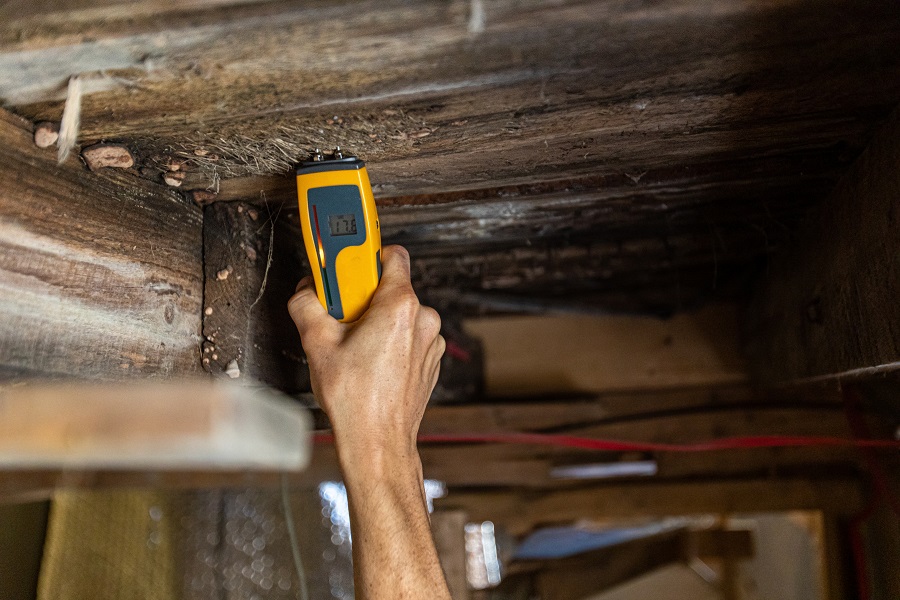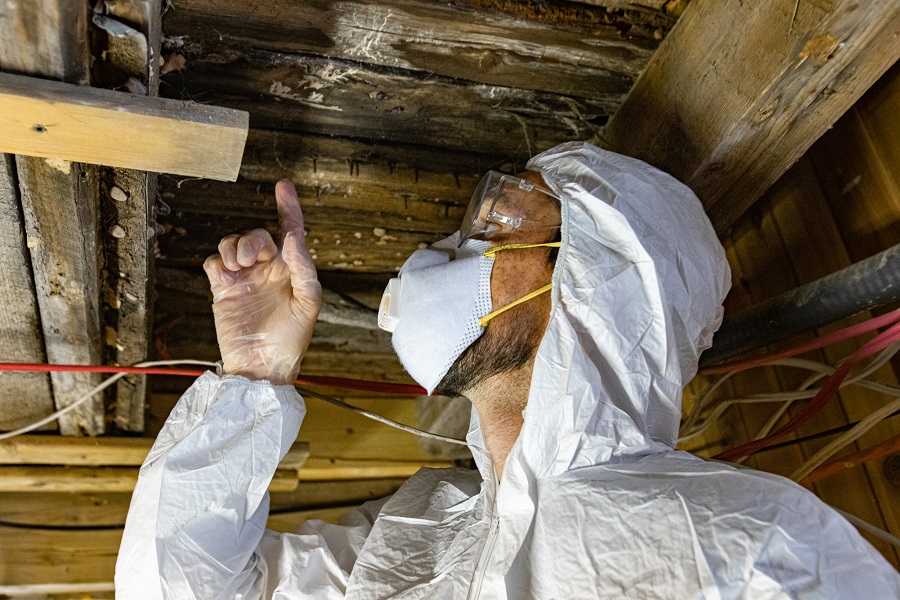What is dry rot?
Dry rot is a general term for Wood-decay fungus. Once the surface of the Wood is broken down by the Sporocarp fungi, it gives way to Mycelium that consumes the wood and dries it out effectively; the end result is a fine dust and dry rot bloom. Dry rot is a type of fungi that starts the rot process before penetrating the surface of timbers. Many of these spores can be found in soil and old wood already affected by dry rot.
It also means that dry rot cannot live in so-called “humidified” lumber that is kept at 15% moisture with a wetted surface. Dry Rot does far greater damage than Wet Rot, you can be surprised to learn that dry rot fungus will invade structural wood in your property while remaining undetected. It often occurs where you’re not looking. This could be found behind the plaster, beneath your floorboards, or even in your loft. As a homeowner, it’s a good idea to understand the telltale signs of dry rot so you can act fast.
What is the difference between dry rot and wet rot?

Dry Rot Treatment and Services
What are the causes of dry rot?
A lot of fungi species cause dry rot. Serpula Lacrymans is the most popular in the Eltham. it can spread from your home’s walls to the floors, and even the plaster is not fixed soon enough. This will affect the integrity of your structural timber, and therefore the structural integrity of your entire house. Dry rot attacks anytime you have an unsafe level of moisture in your wood. This makes it possible for nutrients to be extracted from the moisture by the fungus. The term “dry rot” is used to distinguish between “dry wood rot” and “wet wood.”
Wet timber feeds on dry rot. These hyphae need only 20% moisture to survive, while fungal spores need more than 30% moisture to generate hyphae after this. They are the only living organism that can form three-dimensional networks of hyphae, which can lead to mycelia that spread over considerable distances. H2O, Hemicellulose and cellulose can be stripped from the timber by this fungus, leaving behind a fragile structure of the original wood. You’ll need a private survey to tell if your wood deterioration is caused by dry rot or another kind of fungus. This is very important as the treatments for these damages will differ depending on the exact cause.
The dangers of dry rot in Eltham
Dry Rot Effect on your Property
Dry rot spreads so fast it can possibly cause you to lose your house integrity. As Dry Rot breaks down your properties structural timber, it will eventually cause it to crumble. In extreme circumstances, this can cause different sections of your home to fall apart. Dry rot does not strike your brick or stone, it just moves through it. This is why regular checks are important.
Dry Rot can cause extensive damage, and it is vital that you get to it as soon as possible. When you know a dry rot problem is imminent, call in the experts at Dry Rot Experts and Rescue. If you think you may have a damp problem use our home survey form on our website.
Dry Rot Effect on Your personal health
Actually it is not the fungus that causes the damage. Regrettably, if dry rot does occur, the structural damage may be extensive to your health. This is extremely unhealthy for the infants, elderly people and those with respiratory problems like asthma.
What are the Warning Signs of Dry Rot?
The earlier you discover dry rot, the less time and money you’ll need to spend treating it and initiating remedial works. If any of these signs and symptoms are present, a formal evaluation is recommended.
The beginning of the dry rot cycle
Spores for dry rot are carried across the wind. The insect cuts small holes into the wood and eats the sap that comes out. The fungus then hyphae will germinate and start to spread through the timber if the wood gives them enough nutrients. As these hyphae expand and eat, they may enter a spider web-like array called mycelium. Mycelium is white or grey Mycelium is mostly found between property’s bricks, mortar and plaster and can also try and spread into timber greatly.
Your timber is damaged.
You are likely to start noticing rot issues if your timber begins to dry out. This will sometimes even cause your timber to crumble. You may observe the dry rot changing the color of your timber. Specifically, dry rot can cause something called cuboidal cracking. Cuboidal cracking/splitting is the result of timber breakage around 50 mm. The distinctive symptom of white rot in wood is a creamy colour to the wood due to a white fungal growth called “hyphae”. Hyphae are spider-like fungal growth, they look like cobwebs and are a common symptom of dry rot.
Damp Proofing Can Help Prevent
- Rising / Penetrating Damp
- Ingress of Water
- Salt Crystallization
- Plaster Breakdown
- Damp Staining
- Wet Rot / Dry Rot
Contact Southern Damp Proofing Now to Speak With an Expert
Dry Rot Treatment in Eltham
Only when moisture levels are over 20 percent will a dry rot infestation occur. Monitoring the levels of moisture in your property is the first protective step to eradicating the existence of fungus. Now you will be in control of the moisture levels. For your dry rot treatment, meet a professional.

A professional can determine if your timber needs Boron rods. Boron is a hazardous material, hence damp proofing experts wear the protective clothing. Due to their specialist experience and thorough inspection, our damp experts will be able to identify and address any damage that dry rot may have caused in your home. Dry rots are a serious problem and can lead to serious issues if left untreated. Dry rots are a serious problem and can lead to serious issues if left untreated. Our Southern Damp Proofing team will work with you to implement a suitable treatment that addresses your problem effectively and efficiently. Please don’t delay. If you spot any signs of dry rot, call us immediately on 020 7971 1329 to protect your home.
How can you prevent dry rot damage in Eltham?
The elimination of dry rot is the first treatment process. Any wooded areas of the house that traps enough water and is subject to humidity/moisture ingress can result in a dry rot infestation. Here are some practices that will prevent them from forming: It is your responsibility to ensure that there are no leaks in your house. Facilitate sufficient ventilation.
Properly ventilate and insulate your attic. Oxygenate crawlspaces very well. Waterproof the exterior of your home by sealing the basement and crawlspace floors with our durable, waterproof sealers. Check all flashing to make sure there are no leaks and water directed properly. Keep drains and downspouts clear. Using a wet system? Check for plumbing and heating leaks in your home. The best way to reduce the chance of dry rot is to minimize moisture levels, considering the moist conditions needed for dry rot fungus in feeding and germinating. For example, plugging the leak will help avoid dry redness by providing a pipe that leaks.
Speak to a Dry Rot specialist in Eltham
We are equipped to fix any wet or dry red issues that concern your property or your house. We will give you a free estimate for how much it will cost to get rid of all of it before we begin work.

Dry rot is a long term problem, and can get worse if left unchecked, if you notice any signs of damage on your fence, it is better to contact our contractors right away. The South Damp Proofing services will assist you in solving your dry rot dilemma by e-mail or calling the phone 020 7971 1329.
FAQ’s
Where can dry rot grow?
How can I confirm that I have dry rot?
Is dry rot serious?
If dry rot is left unchecked what will happen?
Will dry rot stretch?
How wide is Dry Rot able to spread?
How do I discover how far Dry Rot has spread?
Can my dry rot problem be treated effectively by you?
Should I restore or replace dry rot?
For Top Quality Damp Surveys & Treatments
Other Areas We Cover
- Dry Rot Treatment in Deptford, London
- Dry Rot Treatment in Ealing, London
- Dry Rot Treatment in East-Ham, London
- Dry Rot Treatment in Edgware, London
- Dry Rot Treatment in Edmonton, London
- Dry Rot Treatment in Enfield, London
- Dry Rot Treatment in Erith, London
- Dry Rot Treatment in Feltham, London
- Dry Rot Treatment in Finchley, London
- Dry Rot Treatment in Friern-Barnet, London